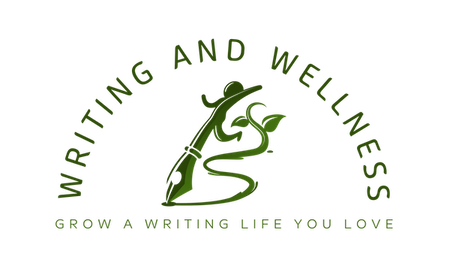Have you ever thought of using sound to inspire writing? Find out more about this fun self-care activity below.
by L. Everhart
In an era dominated by screens and deadlines, writers are increasingly turning to unconventional methods to foster creativity and maintain mental well-being. Among these techniques, sound therapy is gaining traction as a powerful tool to enhance productivity and relaxation.
For writers, incorporating sound therapy into their routines can provide a multitude of benefits. By immersing themselves in soothing soundscapes, writers can alleviate the mental fatigue and creative blockages often associated with the solitary nature of their work.
Sound therapy has general health benefits and offers a unique opportunity to tap into a well of productivity, allowing ideas to flow freely through calm and relaxation.
Sound to Inspire Writing: It Can Help Reduce Anxiety
According to clinical psychologist Dr. Ryan C. Warner, of RC Warner Consulting, LLC :
“Sound has a profound impact on our nervous system, with certain frequencies and rhythms having the power to induce a relaxation response.”
Dr. Warner notes that sound therapy techniques like sound baths can be incredibly beneficial for those struggling with anxiety or chronic stress. Sound baths are a meditative experience where participants are immersed in resonant sound waves produced by instruments like gongs, singing bowls, percussion, chimes, rattles, tuning forks, and voices.
Recent studies have highlighted the profound impact of natural sounds on human physiology and psychology. Research published in the Journal of Environmental Psychology suggests that exposure to natural sounds can reduce stress, lower blood pressure, and improve mood (Song et al. 2023). The research investigated the effects of nature sounds on attention, physiological relaxation, and mood states.
While there was no significant difference in attention tasks between nature and urban sounds, nature sounds were associated with decreased prefrontal cortex activity, increased parasympathetic nervous system activity, and lower heart rate, indicating greater physiological relaxation. Additionally, participants reported feeling more comfortable and relaxed with higher positive mood states when exposed to nature sounds.
The study suggests that nature sounds have potential as a resource for stress relief and relaxation, especially in urban environments.
Sound to Inspire Writing: Sound Can Help Relieve Stress
Additionally, a study conducted at Rensselaer Polytechnic Institute found that natural sounds can enhance cognitive functioning, potentially boosting creativity and problem-solving skills (DeLoach, et al. 2015). The study from Rensselaer suggests that playing natural sounds like flowing water in offices can enhance worker moods, cognitive abilities, and speech privacy.
Unlike conventional white noise, natural sounds might be more effective. The ongoing experiment investigates whether workers exposed to natural sounds are more productive and happier compared to those exposed to traditional masking signals.
But you don’t need an elaborate sound bath to reap the benefits of sound-based practices. Dorothy Tannahill-Moran, founder of Aurras and a certified sound therapist, says:
“A person can quickly darken a room, incorporate aromatherapy, put on earbuds, hit play on their sound bath for stress reduction, and close their eyes — even for 5 minutes.”
An inexpensive “refresh” like this could be just what you need to break through a writer’s block.
Tannahill-Moran says she has seen clients from all walks of life experience shifts in consciousness:
“Sound therapy, also known as sound healing, harnesses the power of sound vibrations to promote relaxation, reduce stress, and foster a deeper connection with oneself.”
Sound to Inspire Writing: Create Your Own Sound Garden
While sound baths, help “wash” participants in immersive experiences, sound gardens are outdoor or indoor spaces designed to offer natural sounds such as flowing water, rustling leaves, and bird calls.
Choose Your Location
Henry David Thoreau, the author of “Walden,” found inspiration for his transcendentalist writings in the solitude of nature, often retreating to the woods near Walden Pond. Select a quiet outdoor spot with natural elements like trees, bushes, and flowers. This will provide a peaceful ambiance for your sound garden.
Select Sound Elements
Virginia Woolf, known for her stream-of-consciousness writing style, often sought solace near the River Ouse, drawing inspiration from the gentle flow of water. Try integrating various sound elements such as wind chimes, running water features, and rustling leaves. These sounds can help stimulate creativity and provide a soothing backdrop for writing.
Incorporate Birdsong
Emily Dickinson, renowned for her introspective poetry, frequently observed birds from her bedroom window, drawing inspiration from their songs and behaviors. If you appreciate birds calls and sounds, install bird feeders or bird baths to enrich your auditory experience.
Personalize with Literary Touches
J.R.R. Tolkien, the creator of Middle-earth, was known to inscribe verses from his own fictional languages onto trees and rocks in his garden, immersing himself in his imaginary world. Add personal touches such as literary quotes engraved on stones, plaques, or wooden signs, creating an environment that resonates with your love for writing.
Tend to Your Sound Garden
Agatha Christie, the queen of mystery novels, found solace and inspiration in her garden at Greenway Estate, where she would often take breaks between writing sessions to enjoy the natural surroundings and gather her thoughts. Regularly tend to your sound garden by watering plants, cleaning bird feeders, and ensuring that sound elements are in working order.
Incorporate Sound to Inspire Writing In Your Writer’s Nook
Note: The following is a way to use sound to clear your mind, relieve stress, and inspire creativity. Once you’ve completed a sound bath, you may feel more ready to write.
Clear away any clutter and bring in soft blankets, cushions, or a yoga mat to get comfortable on the floor. Dim the lighting with lamps or candles. Open a window to allow in soothing outdoor sounds, if possible. Your writer’s nook should be intentionally crafted as it can help you disconnect from the outer world. Also, a carefully crafted nook can amplify the experience, allowing inspiration and insights to flow freely. The simple act of preparing your nook can be a sacred opening into the sound bath’s magic.
With some household and other instruments, and this simple sequence, you can relax to resonant sounds from the comfort of your home writing nook. Let the vibrations recharge your creativity!
Set Intentions
Before you begin, take a moment to ground yourself and set an intention for your sound bath experience ie. reduce stress, boost creativity, or spark emotional healing.
Gather Your Sound Tools
Great compact options include singing bowls, chimes, tuning forks, and small handheld gongs or metals bells. Get creative by incorporating household objects le. filling bowls with beads or rice. Hint: If you want to get fancy, you can find small singing bowl sets, acoustic panels, and bamboo chimes online for under $20 each.
Build Sound Layers
Slowly introduce one instrument at time, enveloping yourself in the tones. Use lighter sounds like chimes or singing bowls first, then layer in deeper vibrations like gongs. Let the instruments’ harmonic resonance flow and move throughout your space and your body, sending sound above, below, and around you. Don’t forget to pause between tones. Breathe deeply.
Immerse Yourself
For 45-60 minutes, continue this deep listening. Melt into the frequencies, and welcome any creative insights.
The Return
Conclude your session by allowing 5-10 minutes of silence to integrate the experience. Keep your eyes closed and absorb the sonic echoes as they slowly fade. Be sure to slowly stretch and to hydrate after the experience. Consider writing your feelings and thoughts in a journal.
Creating Habits and Tracking Progress
As the demand for holistic wellness practices continues to grow, sound therapy offers writers a novel approach to nurturing their creativity and maintaining mental balance. Whether seeking inspiration, relaxation, or a boost in productivity, the soothing sounds of a sound bath or garden may be just the remedy you need in an increasingly chaotic world.
* * *
L’Taundra Everhart is a journalist, educator, and founding director of mixedgreensforthesoul.com, a wellness company offering products and services to enhance your self-care journey. BYG! Mixed Greens For The Soul, LLC also offers an online class and guided journals on self-care as well as a host of FREE resources such as challenges, recipes, blogs, videos, and podcasts.
For more on L’Taundra and her work, please connect with her on Instagram and YouTube.
Featured image by Antoni Shkraba via Pexels.
Resources:
Cao, M., Zhang, Z. Adjuvant music therapy for patients with hypertension: a meta-analysis and systematic review. BMC Complement Med Ther 23, 110 (2023). https://doi.org/10.1186/s12906-023-03929-6
DeLoach, A. G., Carter, J. P., & Braasch, J. (2015). Tuning the cognitive environment: Sound masking with ‘natural’ sounds in open-plan offices. Presentation #2pNSa3 at the 169th Meeting of the Acoustical Society of America, May 19, 2015, Kings.
Jimenez MP, DeVille NV, Elliott EG, Schiff JE, Wilt GE, Hart JE, James P. Associations between Nature Exposure and Health: A Review of the Evidence. Int J Environ Res Public Health. 2021 Apr 30;18(9):4790. doi: 10.3390/ijerph18094790. PMID: 33946197; PMCID: PMC8125471.
Song, I., Baek, K., Kim, C., & Song, C. (2023). Effects of nature sounds on attention and physiological and psychological relaxation. Urban Forestry & Urban Greening, 86, August 2023.
Stanhope, J., & Weinstein, P. (2020). The human health effects of singing bowls: A systematic review. *Complementary Therapies in Medicine, 51*, 102412. https://doi.org/10.1016/j.ctim.2020.102412

